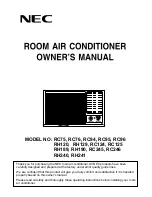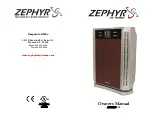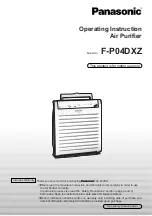
-
175
-
'11 • SCM-SM-110
Keep the openings of the pipes covered with tapes etc. to prevent dust, sand, etc. from entering them.
2
1
Indoor unit
Latch
(2 locations)
Installation
borad
Installation borad
Wall
Indoor unit base lower latch
Installation Steps
Pass the pipe through
the hole in the wall,
and hook the upper
part of the indoor unit
to the installation board.
Gently push the lower
part to secure the unit.
①
Push up at the marked portion of the indoor unit base lower latch, and slightly pull it
toward you. (both right and left hand sides) (The indoor unit base lower latch can be
removed from the installation board)
②
Push up the indoor unit upward. So the indoor unit will be removed from the installation
board.
The marked portion of the indoor
unit base lower latch.
CAUTION
Wall
Gutter
Pipe accommodating section
CONNECTION OF REFRIGERANT PIPINGS
Preparation
Indoor
(Do not turn)
Press
Remove
A
90 ± 0.5°
Dimension A
Liquid side ø6.35 : 9.1 (mm)
Gas side ø9.52 : 13.2 (mm)
ø12.7 : 16.6 (mm)
Remove the flared nuts. (on both liquid and gas sides)
Install the removed flared nuts to the pipes to be connected,
then flared the pipes.
Flaring work
CAUTION
Do not apply refrigerating machine
oil to the flared surface.
Measurement B
Flaring
block
Copper pipe
Copper pipe diameter
Use a flare tool designed for R410A or a conventional flare tool.
Please note that measurement B (protrusion from the flaring block) will vary depending on the
type of a flare tool in use.
If a coventional flare tool is used, please use a copper pipe gauge or a similar instrument to
check protrusion so that you can keep measurement B to a correct value.
Clutch type flare tool for
R410A
Conventional (R22) flare tool
ø6.35
ø9.52
ø12.7
0.0 - 0.5
0.0 - 0.5
0.0 - 0.5
1.0 - 1.5
1.0 - 1.5
1.0 - 1.5
1.5 - 2.0
1.5 - 2.0
2.0 - 2.5
Measurement B (mm)
Clutch type
Wing nut type
CAUTION
Do not apply excess torque to the flared nuts.
Otherwise, the flared nuts may checkdepending.
Connection
How to remove and fit the front panel
Insulation of the connection portion
Finishing work and fixing
Indoor
Liquid side
Gas side
(Do not turn)
Cover the coupling with insulator and then cover it with tapes.
Cover the indoor unit’s flare-connected joints, after they are checked for a gas leak, with an indoor
unit heat insulating material and then wrap them with a tape with an attached insulation pad placed
over the heat insulating material’s slit area.
Vinyl tape
Use an attached insulation pad for heat insulation.
Position it so that the slit area faces upward.
Connect the pipes on both liquid and gas sides.
Tighten the nuts to the following torque.
Liquid side (ø6.35) : 14.0 - 18.0 N·m (1.4 - 1.8 kgf·m)
Gas side (ø9.52) : 34.0 - 42.0 N·m (3.4 - 4.2 kgf·m)
(ø12.7) : 49.0 - 61.0 N·m (4.9 - 6.1 kgf·m)
Connection wiring,
Earth wiring
Outer tape
Refrigerant piping
Drain hose
Wood screw
Clamp
Cover the exterior portion with outer tape and
shape the piping so it will match the contours
of the route that the piping to take.
Also fix the wiring and pipings to the wall with
clamps.
Removing
①
Remove the air inlet panel.
②
Remove the 5 set screws.
③
Remove the 4 latches in the upper section.
④
Move the lower part of the panel forward and
push upwards to remove.
Fitting
①
Do remove the air filter.
②
Cover the body with the front panel.
③
Fit the 4 latches in the upper section.
④
Tighten the 5 set screws.
⑤
Fit the air filter.
⑥
Fit the air inlet panel.
Open/close and detachment/attachment of the air inlet panel
To open, pull the panel at both ends of lower part
and release latches, then pull up the panel until
you feel resistance.
(The panel stops at approx. 60 open position)
To close, hold the panel at both ends of lower
part to lower downward and push it slightly until
the latch works.
To remove, pull up the panel to the position
shown in right illustration and pull it toward you.
To install, insert the panel arm into the slot on the
front panel from the position shown in right
illustration, hold the panel at both ends of lower
part, lower it downward slowly, then push it
slightly until the latch warks.
Set screws
latch
How to remove the indoor unit from the installation board
Arrange the drain hose in a downward angle
Avoid the following drain piping.
Pour water to the drain pan located under the heat exchanger, and ensure that the water is discharged outdoor.
When the extended drain hose is indoor, securely insulate it with a heat insulator available in the market.
Fixing of indoor unit
Since this air conditioner has been designed to collect dew drops on the rear
surface to the drain pan, do not attach the power cord above the gutter.
Drainage
Go through all installation steps and check if the
drainage is all right. Otherwise water leak may occur.
Higher than specified
The drain hose
tip is in water.
Wavy
The drain hose
tip is in the gutter.
The gap to the ground is
5 cm or less.
Odor from
the gutter
Содержание SCM100ZJ-S1
Страница 64: ...63 11 SCM SM 110 Service data record form 55...
Страница 194: ...193 11 SCM SM 110 4 Ceiling cassette 4way compact type FDTC refer to page 157 to 172...
Страница 198: ...197 11 SCM SM 110 PJAO12D786...
Страница 223: ...222 11 SCM SM 110 4 way valve coil 1 Disconnect the connector 2 Loosen a screw and remove the coil Connector Screw Coil...
Страница 237: ...236 11 SCM SM 110 EEVB EEVC EEVA EEVD MARKING GREEN BLUE RED WHITE EEV A EEV D 46 WH 46 46 46 M YE OR BL RD Input 12VDC...
















































